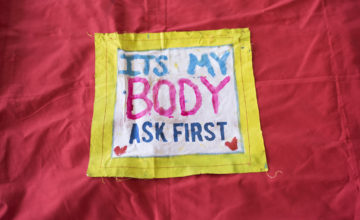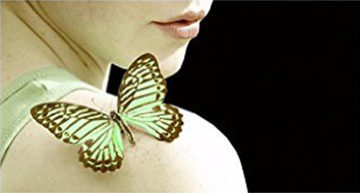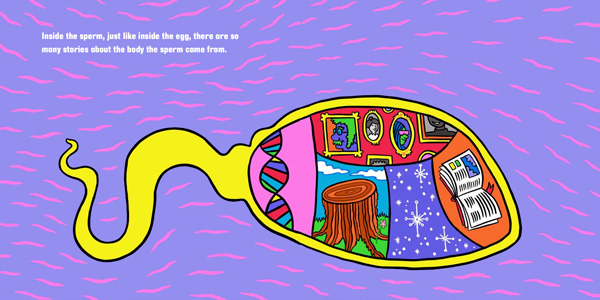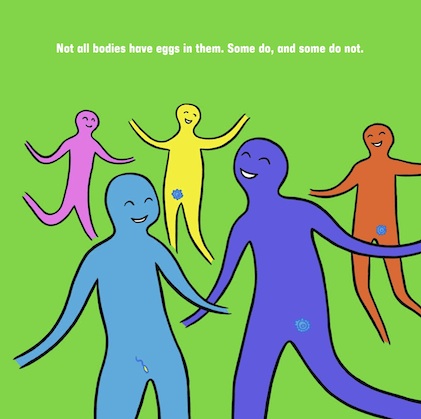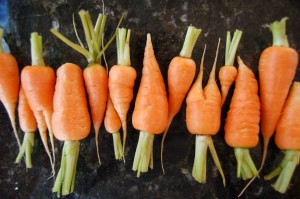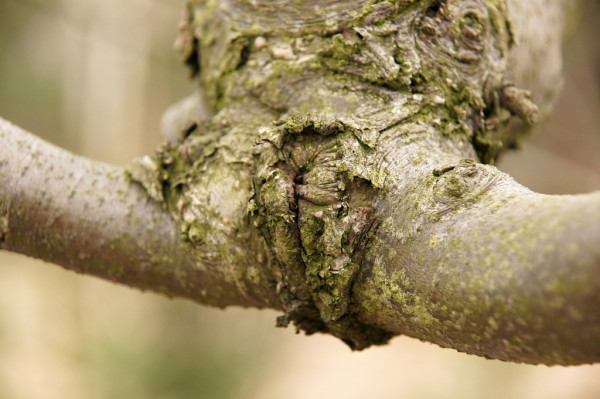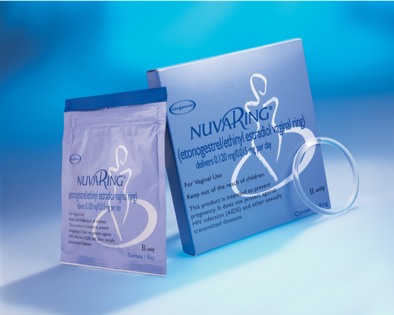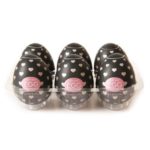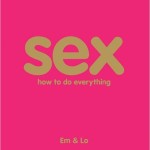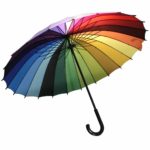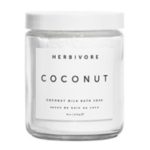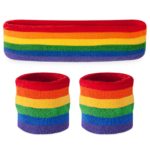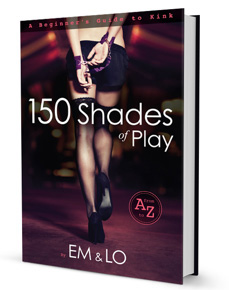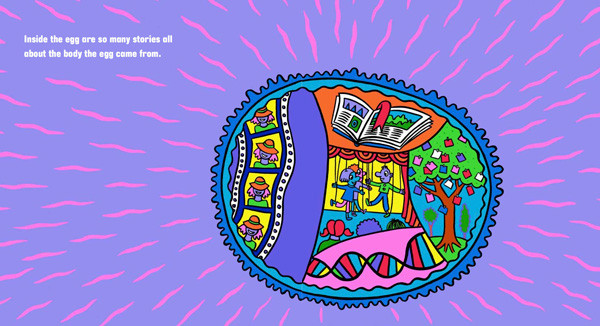
One of our favorite sex educators, Cory Silverberg, just came out with a new children’s book called “WHAT MAKES A BABY: A Book for Every Kind of Family and Every Kind of Kid.” It’s brightly illustrated, awesomely inclusive, and very, very sweet. Plus, it makes the perfect gift for families with little ones (or little ones on the way)! Cory says it’s intended for kids 4 and up — of course, we read it to our 2 year olds. They ate it up…literally. Cory, we’re going to need another copy without drool on it!
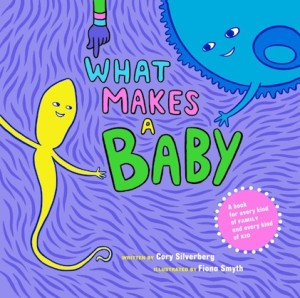 EM & LO: Your average reader might wonder why you chose to be vague about who has eggs and a uterus and who has sperm — for example, you write “Every body that has a uterus always has it in the same place…” without ever mentioning the word “woman.” Can you explain?
EM & LO: Your average reader might wonder why you chose to be vague about who has eggs and a uterus and who has sperm — for example, you write “Every body that has a uterus always has it in the same place…” without ever mentioning the word “woman.” Can you explain?
CORY: I guess the simple answer is that I wanted a more honest book. It’s just not true to say that every woman has a uterus. Most women have a uterus. But not every woman does. And for that matter, not every woman who has a uterus has one that either can or will be home to a growing fetus at some point in their lives.
As a sex educator who works mostly with adults I see every day the effect that sex education has on adult sexuality, and it isn’t all positive. When we teach children at the youngest ages that being a woman means having a uterus and eggs and being a man means having a penis and sperm, it may seem like a small thing but actually it’s a message that goes deep into our psyche. And later on, for those of us who want kids and try to make them and find that our bodies won’t co-operate, it can feel like an enormous betrayal.
So that’s one reason. Another more specific reason is that I wanted a book that would work for every kind of person. I was particularly thinking of all the transgender, transsexual, and gender non-conforming parents I know whose bodies simply don’t fit that narrow story most books tell. Some women’s bodies don’t have a uterus because the weren’t born with one. That doesn’t make them any less a woman or any less a mother. I feel like we all deserve books that reflect our experience, and that’s how I wrote What Makes a Baby.
If you cover the different ways babies can be born (vaginally, cesarian), why not cover the different ways they can be made (intercourse, IVF, etc)?
That will be in book 2! What Makes a Baby is the first of a series of three books, but it’s written for the youngest age group, children as young as 4. Little children tend not to be very good at sitting still for a long laundry list of things. There’s a reason picture books usually follow a standard format and length; it works! I wanted a book that wasn’t just a text book for kids, or a check list of what kids MUST know, I wanted a book that kids and parents would want to read. And when it comes to young children that means being spare with words and information and letting the meaning and hopefully a bit of poetry flow.
The truth is that there are so many variations on how we’re making babies (at least in terms of getting the sperm and egg together, and then getting them to a uterus) that to do it properly would have meant a lot more pages. So we made the decision to save that for the next book which will be about three times as long and be geared to older children.
You’re so careful about terminology, so why did you decide to refer to the embryo and fetus as a baby (“But before a baby can be born it has to get bigger, and bigger, and BIGGER” next to pictures of the various stages of gestation starting with 2 weeks)…?
This was one of those things I struggled with for a long time. When I’m working as an educator and teaching live, I use the terms embryo and fetus (and sometimes zygote, which usually gets a few laughs). In a book you don’t get a chance to explain or talk around words, you just have the word on the page. And in a picture book the language has to serve many functions. It has to convey meaning of course, but it also has to be fun to read out loud, it has to have the feeling you want to convey. Ultimately the words embryo and fetus just didn’t do it for me. So it was a creative decision not a pedagogical or political one. Of course it has political implications. Some people feel very strongly that a baby isn’t a baby until it’s born. Others think that a baby is a baby sometime after conception. Others think that it’s a baby at the point of conception. I’m not ignorant of these debates, and originally I used both embryo an fetus as they reflect my own understanding. My hope is that I have left enough space in the story for parents to share their own beliefs and values around this question.
“Some babies are born by coming out through a part of the body that most people call the vagina.” Why not just say “…a part of the body that’s called the vagina”, since that is precise and accurate? And what are your thoughts about parents using euphemisms for genitals?
Language is language, and it doesn’t become any more or less important when we’re using it to describe our bodies than it does when we’re using it to describe our feelings, or a book we read or our favorite toy. I think kids should know all kinds of words for different body parts including genitals. So I wouldn’t say that people should never use euphemisms for genitals, but I would say that kids should know the terms that doctors and health care providers use in addition to whatever words a family might use. I think euphemisms can be a problem if they are really about embarrassment or shame. But sometimes we use words because we like the way they sound and feel, and I’m not sure why we need to police parents and families in that way.
Why did I write “most people call the vagina”? Again, because I think it’s more honest. Not every one calls that part of the body the vagina. Most people do, but not everyone does. So why not just say that? It opens up the opportunity for a conversation about language and doesn’t foreclose options for the readers.
This language also has particular meaning and importance for Trans* dads, who have given birth but who often don’t use the word vagina to describe that part of their bodies. So many of us have the experience of having to change words in books while we read them to kids so that they reflect our experience. I wanted a book that would require the least amount of re-writing, and using this phrase makes it a little more real for a few more people.
Have you gotten any criticisms or hate mail from anyone? We’d guess if you’ve gotten any, it would be from the religious “family values” anti-gay crowd.
Yes I have. It started when I launched my Kickstarter. There were a few posts (one was on Glen Beck’s website The Blaze) and they seemed to suggest I was destroying families with my book. There have been a few more articles – as you guessed – from conservative and generally homophobic organizations, since the book came out. I’m glad when my work makes people think and starts conversations, but unfortunately in each of these cases, as far as I can tell, the people writing have not actually read my book and don’t seem to be interested in having a conversation as much as using my book as an occasion to spout the same narrow minded often hateful perspective they usually take.
“What Makes a Baby” is on sale now on Amazon.com!
Check out Cory’s follow-up for 7 to 10 year olds:
Sex Is a Funny Word
MORE LIKE THIS FROM EMandLO.com:




